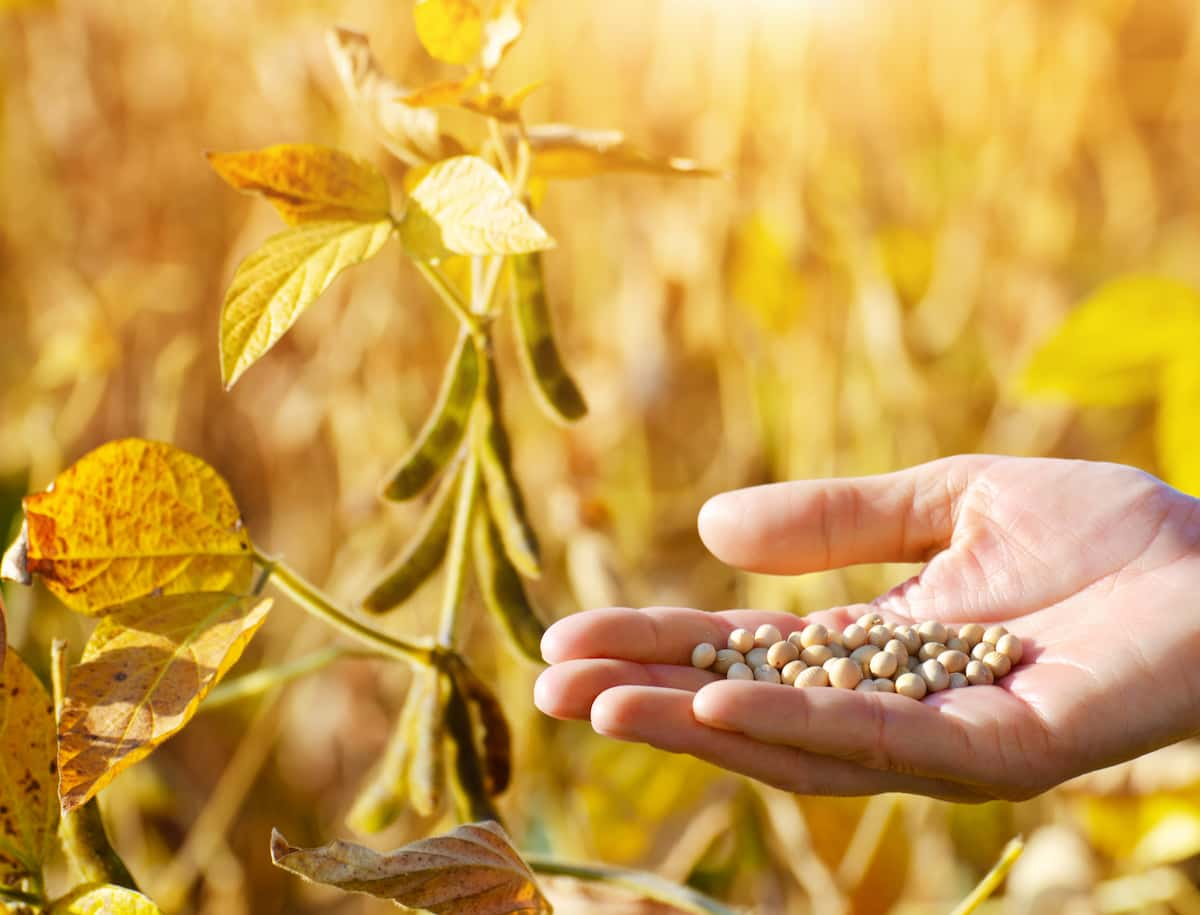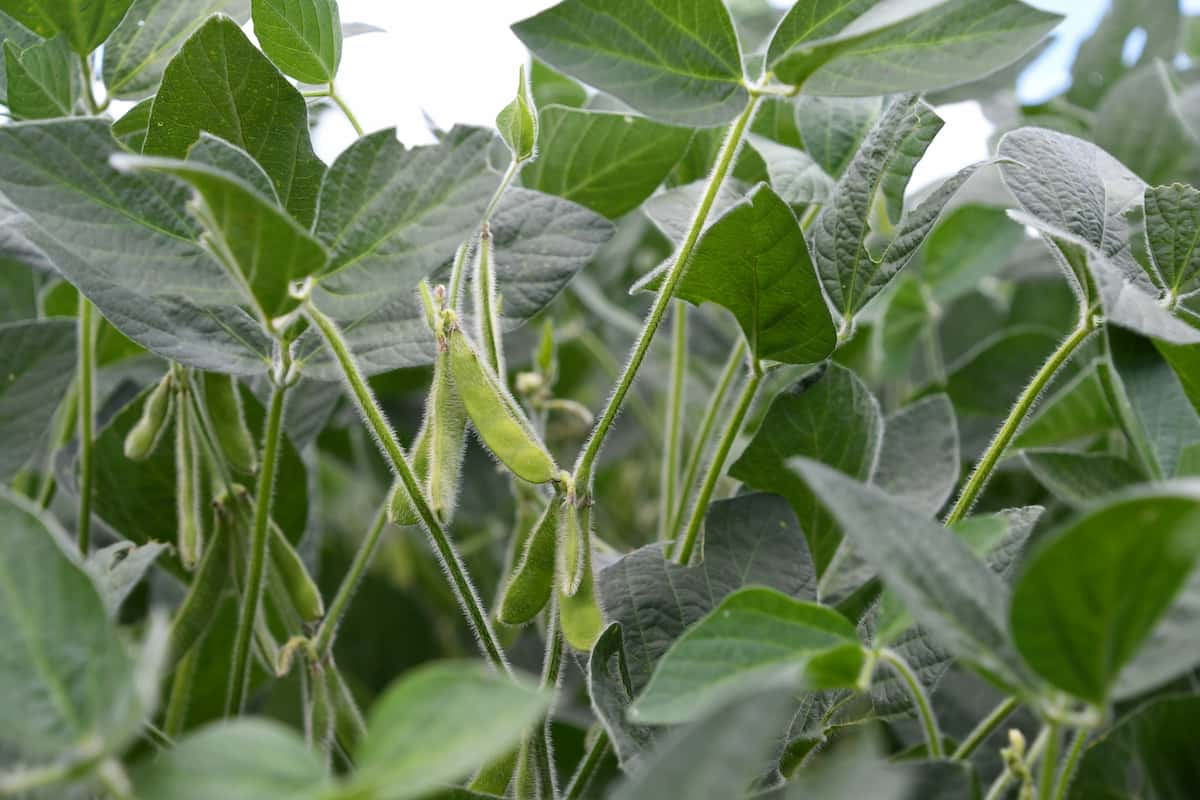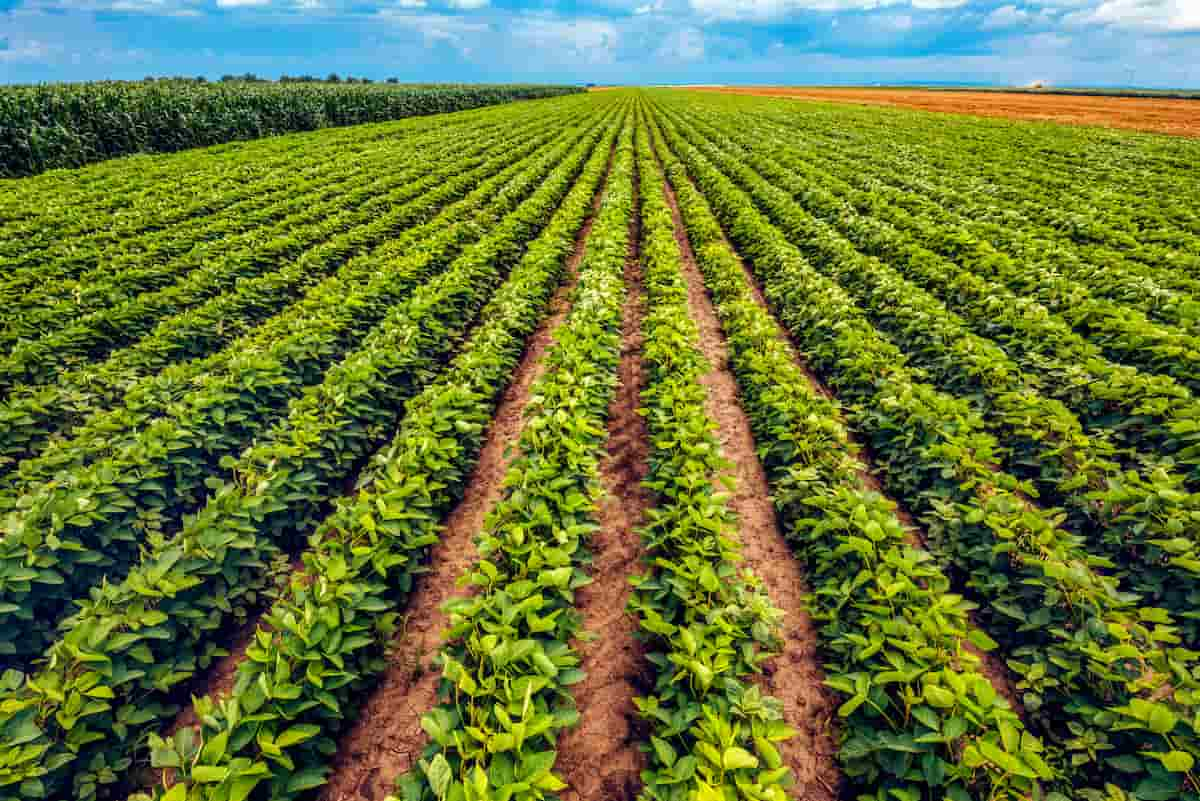Soybean, also known as Glycine max, is one of the most important crops in the world, with a global production of over 350 million tonnes. Soybeans, a legume from East Asia, are now grown worldwide and popularly used for their 18% oil content. They are cultivated in conditions similar to corn and used to produce oil, biofuel, and other products.

Soybean cultivation is popular due to its high protein content and oil yield, making it a profitable crop for farmers. However, successful soybean cultivation requires proper knowledge and skills. This step-by-step guide to soybean production covers all the essential cultivation practices that can help you maximize your yield and profits.
Soybean Production Guide
Best Package and Practices of Soybean High Production
Following best practices, such as choosing high-yielding varieties, using quality seeds, maintaining proper soil fertility, and managing pests and diseases, is crucial for high soybean production. In addition, timely sowing, appropriate weed control, adequate irrigation management, and timely harvesting are important practices. Farmers can get the most soybeans from their fields using these methods, new technology, and agronomic strategies.
Land/ Field Preparation and Soil Requirements for Soybean
Soybean grows on rich, well-drained loamy soils. Waterlogging harms crops, and acidic soils below pH 6.0 need 2t/ha liming seven days before sowing. Land preparation, plowing, and laddering are important.
Temperature, Climatic, and Rainfall Requirements for Soybean
Soybean requires a temperature range of 15 to 32°C for germination, while higher temperatures promote rapid growth. The crop needs around 60-65 cm of annual rainfall, but drought during flowering or just before can result in flower and pod drop. Rain during maturity can also impair grain quality. The ideal soil type is sandy loam with good organic matter content.
Propagation Method and Seed Quality for Soybean
Soybean propagation can be done with high-quality seeds treated with fungicides and insecticides to control seed-borne diseases.
Seed Treatment for Soybean
Using fungicides on crops prevents soil-borne diseases. Carbendazim or Thiram at 2g/kg of seed, Trichoderma viride at 4 g/kg, and Pseudomonas fluorescens at 10 g/kg. Fungicides conflict with biocontrol and biofertilizers. Before sowing, spray seeds with biocontrol agents and Rhizobium. Seeds can be coated with 300 mg/kg ZnSO4 in 10% maida solution or arappu leaf powder to improve field hold. With rice kanji as a binder, use three packets of rhizobial culture and three packs of phosphobacteria to treat seeds.
Seed Rate and Spacing for Soybean
The recommended seed rate for soybean varieties is 80 kg/ha, which can produce an optimal plant population of 6,66,000/ha. Irrigated crops need 60-70 kg/ha, and intercrops 25-50 kg/ha. In heavy soils, dibble seeds are 2-3 cm deep; in light soils, 3-4 cm deep. Plants should be spaced 30 x 5 cm in the rainy season and 30-45 x 2.5 cm in the summer for optimal growth and yield. 25-30 kg of seeds are ideal for sowing in an acre to maximize plant population and yield.
Sowing Method for Soybean
Sowing soybeans in line with a seed drill is recommended because it uses fewer seeds per acre and allows for easier weeding and hoeing. Plant spacing that is uniform provides for better resource utilization and higher yields.
Crop Rotation and Intercropping in Soybean
Soybean can be intercropped with corn, sesame, tur, cotton, drilled paddy sorghum, and sugarcane. As part of a good crop rotation strategy, it can be rotated with other crops such as wheat, potato, gram, and tobacco to maintain soil fertility and limit pests and diseases.
Manure & Fertilizer Applications in Soybean
For the best soybean growth, use a base dressing of 20 kg N, 80 kg P2O5, 40 kg K2O, and 40 kg gypsum per hectare. Under irrigation, apply 25 kg ZnSO4/ha. When planting, apply between 25 and 30 t/ha of FYM. These fertilizers provide the necessary nutrients for soybean growth and help achieve higher yields.
In case you missed it: Sunflower Production Guide: A Step-By-Step Cultivation Practices for Beginners

Weed Management and Herbicide Application in Soybean
Soybean production requires weed control. Apply 4 liters per hectare of alachlor or 3.3 liters per hectare of pendimethalin after sowing and hand-weed 30 days later. Two hand weedings 20 and 35 days after sowing are possible without herbicide use. Apply Imazethypur or Boqaitha after the weeds have grown 20 days after sowing, and pull them by hand 30 days after sowing.
Water Management in Soybean
Soybean is a rainfed crop; in the rainy season, it can be grown without irrigation. However, it requires consistent watering and 5-6 irrigations during the summer. Irrigation during crucial growth stages such as sprouting, flowering, pod initiation, and bean filling is essential for maximum yield.
Water stagnation can damage the crop. Keep soil moist from blooming to maturity. Spraying plants with Kaolin 3% or liquid paraffin 1% can reduce moisture stress. Depending on soil and weather conditions, immediate irrigation after sowing, life irrigation on the third day, and additional irrigations at 7-10 days and 10-15 days during summer and winter may be given.
Disease Control in Soybean
Major diseases of soybean are Alternaria leaf spot, anthracnose/pod blight, bacterial blight, Cercospora leaf blight, and charcoal rot can impact soybean. Collar rot/sclerotial blight, frog eye leaf spot, Rhizoctonia aerial blight, soybean mosaic, and yellow mosaic are other diseases that can impact soybean.
Use of disease-resistant cultivars, crop rotation, adequate drainage, early sowing, and management of fungicides like Trifloxystrobin+Tebuconazole, Carbendazim+Mancozeb, or Hexaconazole+Metalaxyl-M are just a few of the disease-controlling practices. Managing soybean diseases can also be aided by using disease-free seeds, keeping the right plant spacing, and avoiding waterlogging.
Pest Control in Soybean
The hairy caterpillar, gram pod borer, tobacco caterpillar, thrips, jassids, girdle beetle, and stem fly are major pest attacks on soybeans. Neem-based herbicides, biopesticides, and insecticides like chlorpyriphos, monocrotophos, and endosulfan can all be useful for controlling these pests. Crop rotation, intercropping with plants like marigolds that repel insects, and releasing natural predators like ladybugs are all examples of integrated pest control techniques that can be used. Pest population declines can also be aided by good field sanitation, timely sowing, and clearing of crop residues after harvest.
Harvesting and Threshing of Soybean
The yellowing of leaves and shedding of the soybean harvest indicate ripeness. When most pods turn yellow and dried, it is time to harvest. The ideal moisture level for harvest is 13%, as lower levels can cause pod shattering and kernel cracking. Harvesting can be done by hand, with sickles, or with threshing machinery. Buyers take soybean seeds at 15%-13% moisture on an oven-dry basis if they fall out of the testing cup after being squashed tightly.
In case you missed it: Groundnut Production Guide: A Step-By-Step Cultivation Practices for Beginners

Soybean Yield per Acre
The average soybean crop yield can be between 2,000 and 4,000 kilograms per acre. Some high-yielding farms manage up to 6,000 kilograms per acre or more.
Conclusion
Planning and executing soybean production is profitable and sustainable. Farmers should choose high-quality seed varieties, prepare the soil, plant at the right time, manage pests and diseases, and add fertilizers and irrigation to maximize yields. Soybeans need crop rotation and weed control. Farmers may increase income and promote sustainability by following cultivation steps.
- Feed Your Flock for Less: Top 10 Tips to Save on Chicken Feed
- Ultimate Guide to Ossabaw Island Hog: Breeding, Raising, Diet, and Care
- Hatching Answers: The Top 10 Reasons Your Chickens Aren’t Laying Eggs
- Eggs and Economics: Breaking Down the Cost of Raising Backyard Chickens
- Defend Your Greens: Proven Methods to Keep Iguanas Out of Your Garden
- Ultimate Guide to Cinnamon Queen Chicken: A Comprehensive Guide for Beginners
- Ultimate Guide to California Tan Chicken: Breeding, Raising, Diet, Egg-Production and Care
- Ultimate Guide to Marsh Daisy Chicken: Breeding, Raising, Diet, and Care
- 10 Types of Chicken Farming Businesses You Can Start for Profits